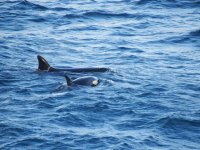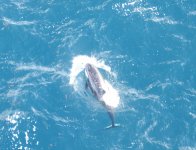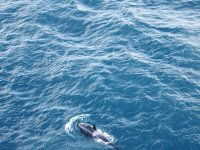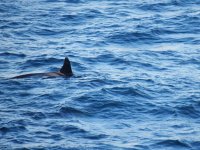Stonefaction
Dundee Birding....(target 150 in 2024).

I had a wee look via Google Images for Balearic Shearwater photos and the very first pic that came up (see below) has a pale hind-neck contrasting with the darker cap and wings, giving at least the impression of a collar. The bird in the photo is also a bit patchy looking, suggesting to me at least that the stage of moult the bird is at can give rise to an impression of a collar and patchy appearance on some individuals of the species. I suspect lighting will also play a big part in the overall appearance. In sunlight, differences in shade will be easier to see than in overcast conditions when detail is harder to pick out and colours are muddied. There were a few other photos with the hint of a paler neck showed up in the search but it certainly wasn't a consistent feature.
https://www.arkive.org/balearic-shearwater/puffinus-mauretanicus/
Reading Paul's description I can kind of see why it may have been recorded as Shearwater sp. Personally, I don't like writing descriptions as colours/shades especially are a minefield with so much variation in lots of colours (such as greys, greens and browns) to try to describe accurately not to mention getting the parts of birds exactly correct. Typing this up I wondered if there was any site online with a guide to writing accurate (and hopefully acceptable) descriptions for those with little experience of the process to make it a less daunting task. So I had a quick look and found this...
https://www.devonbirds.org/birdwatching/articles/tactical_description_writing
https://www.arkive.org/balearic-shearwater/puffinus-mauretanicus/
Reading Paul's description I can kind of see why it may have been recorded as Shearwater sp. Personally, I don't like writing descriptions as colours/shades especially are a minefield with so much variation in lots of colours (such as greys, greens and browns) to try to describe accurately not to mention getting the parts of birds exactly correct. Typing this up I wondered if there was any site online with a guide to writing accurate (and hopefully acceptable) descriptions for those with little experience of the process to make it a less daunting task. So I had a quick look and found this...
https://www.devonbirds.org/birdwatching/articles/tactical_description_writing









